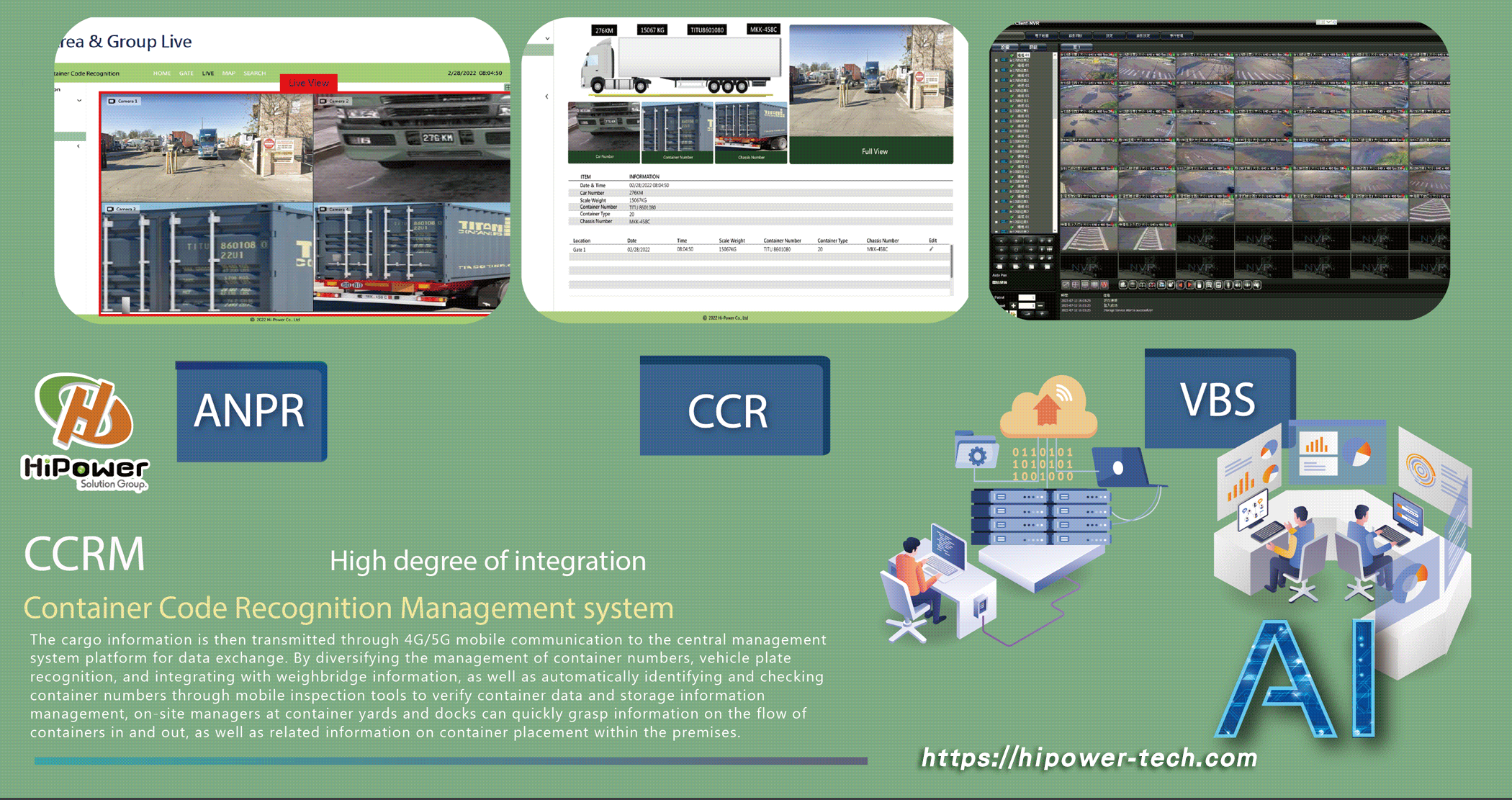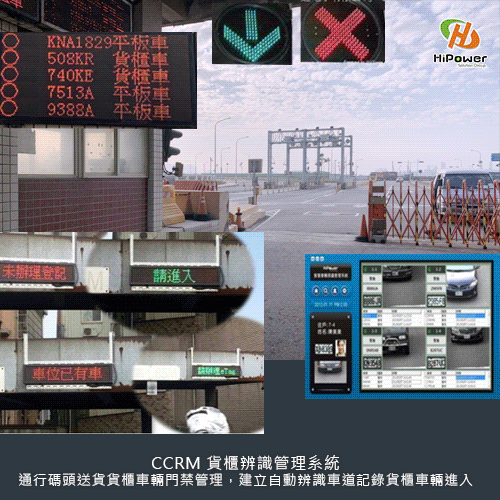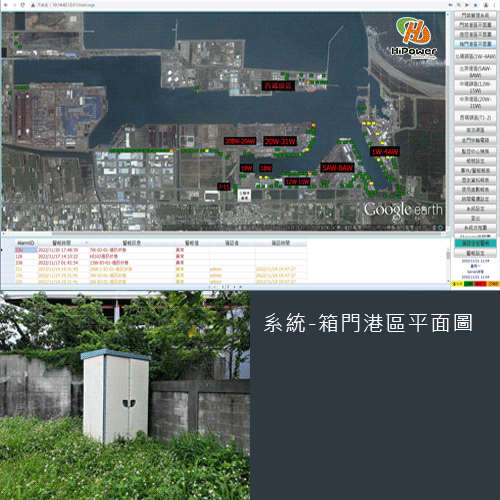Solution

Hipower Solution
Container Code Recognition Surveillance
◆ Container Truck License Plate/Container Number/Container Damage Identification
◆ Dangerous Container Storage Area Smoke, Flame, and Toxic Gas Detection
☁ Pedestrian Flow Detection and Statistics
☁ People Loitering or Hanging Around
☁ Track Intrusion by Personnel
☁ Abnormal Pedestrian Flow Patterns
☁ Passenger Congestion Levels
☁ Passenger Search Assistance
☁ Vehicles Overstaying or Delayed
☁ Illegal Parking in No Parking Zones
This system equipment can be paired with HIPOWER's peripheral devices (RFID readers, LED displays, network controllers and recording software, and card readers) to expand the number of lanes for vehicle identification. It also supports multi-lane management applications by integrating with the center container yard access control system platform CCRM.
CCRM_Container Code Recognition Management
Application Areas
Enhances lane safety, traffic management efficiency, and logistics verification accuracy for managers
Factory Sentry Vehicle Management
Port and Terminal Vehicle Management
Container Distribution Center Vehicle Management
Factory Outbound Logistics Management
Intelligent Port Container Recognition Management Video
Enhances lane safety, traffic management efficiency, and logistics verification accuracy for managers.
Benefits
Sentry Vehicle Automated Clearance
Vehicle Passage Position Tracking
Automatic Event Popup Display
Container Weighbridge Integration Records
Customized System Services
Diverse Data Transmission
AI Image Accuracy
Highly Expandable Functions
CCRM_Container Code Recognition Management
Application Actual Cases
Port Terminal IID Truck
Yellow bounding boxes clearly delineate various objects in the scene, including large vehicles (BigCar), pedestrians (Human), and smaller vehicles (Car). This indicates that the AI model is trained to recognize and classify the following objects:

Vehicle and Container Access Recognition and Warehouse Management

System - Real-time Area Access Monitoring
Guidance for Container Parking Area
CCR Container Number Recognition System
Confirmation of Container Installation on Ship
Container Distribution Center Warehouse Management - Crab Crane Trucks